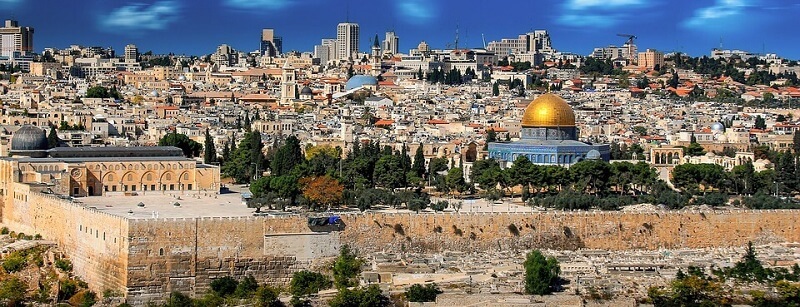Jerusalem 2020 – See the Future
In a recent interview the Jerusalem Development Authority Director of Tourism, Ilanit Melchior talked about the city’s plan for the next 5 years and how the mayor, Michael Bloomberg sees the future of the City of Gold. jerusalemThere are plans in place for the city’s expansion in industry, biotechnology, academic education, health care, hi-tech and tourism. The city already beats every other city in the world for significant religious sites (Christian, Muslim and Jewish) and is one of the most historic cities in the world. The new vision for 2020 is to add a few mod-cons to the city, attractions which other capitals have already had for many years and which have proved successful tourist magnets. Jerusalem hopes to attract 4 million more tourists by 2020 by marketing itself independently of Israel just as capitals like New York, London and Paris are marketed as stand-alone destinations.

The plan for 2020 was born in collaboration with visiting Harvard Professor Michael E. Porter and urban economist Richard Florida. Porter’s plan is based on the principle of “Competitive advantage.” Or simply put: figure out what you have that no one else has and promote it. His principle states that to develop a city’s economy, you must identify its relative competitive strengths and develop them. The plan will involve intensive marketing overseas and focus on people traveling independently and not on package trips. Jerusalem is already the top attraction in Israel drawing in 75% of all visitors and being the site of the top 5 tourist attractions in the country (Western Wall, Jewish Quarter, Church of the Holy Sepulchre, Via Dolorosa and the Mount of Olives).
Jerusalem’s Cultural Mile or Museum Row
Part of promoting Jerusalem as a travel destination is making the city more walkable. This will be done by connecting significant attractions by tree lined paths and plenty of signs telling tourists about the sites. New additions to the already thriving tourist city include a Museum Row like in New York, Los Angeles and other capitals. The “Row” will start at the historic First Station and connect the top Jerusalem museums with the House of Parliament, Supreme Court Building, National Library and Old City by a series of parks and paths. The walking and cycling route will be lined with cafes, galleries, parkland and cultural centers. Museum Row will also be used as an outdoor venue for concerts, happenings and special cultural events.
More Improvements for Jerusalem on the Horizon
Other visions for Jerusalem’s future include a cable car from the First Station to the Old City; a tourist mini-train to take you through the Old City and a large Ferris wheel like in almost every other capital in the west. The First Station, which is already a Jerusalem point of interest, is to have a new section called Kid’s Station with kid-friendly attractions like a carousel and rock wall for climbing.
Apart from additional attractions, Jerusalem plans to make the public transportation more streamline and increase the number of hotels in the city to accommodate the potential additional 4 million tourists. One of the obstacles is transportation on Shabbat. The religious population in Jerusalem is against public transport on the Holy Sabbath. However, before you get too excited bear in mind that all these plans cost money and are yet to be presented to parliament for approval. Hopefully, the future of Jerusalem will be a bright one and make the already historic and magical city a travel Mecca for globe trotters.
 Login / Register
Login / Register
 Contact Us
Contact Us
 Certificate of Excellence
Certificate of Excellence Guaranteed Departure
Guaranteed Departure Low Prices Guaranteed
Low Prices Guaranteed 24/7 Support
24/7 Support




